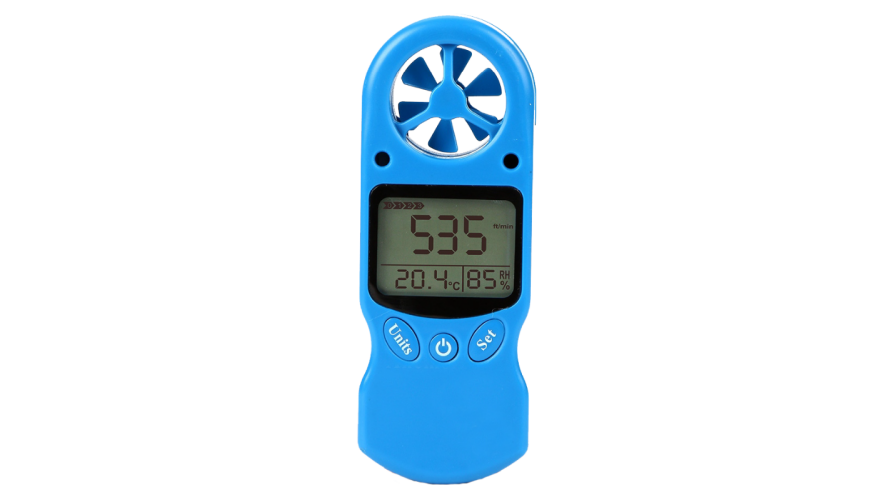Comparing Digital and Mechanical Anemometers: Which is Right for You?
Comparing Digital and Mechanical Anemometers: Which is Right for You?
Blog Article
Anemometers Introduced: Recognizing Their Value in Ecological Monitoring and Security Procedures
The role of anemometers in ecological monitoring and precaution is often undervalued, yet their significance is indisputable. These tools have a long history rooted in scientific inquiry and technical advancements, developing to become important tools in numerous areas. From weather forecasting to aeronautics security, anemometers play a vital function in offering precise data that educates decision-making procedures and enhances overall safety. Understanding the details of anemometers reveals a world of vital insights that are fundamental to our understanding of the setting and the steps we require to make sure safety and security.
Background of Anemometers
The evolution of anemometers can be mapped back to the old worlds where rudimentary wind determining tools were first made use of. One of the earliest recognized anemometers was the hemispherical mug anemometer designed by Leon Battista Alberti in the 15th century.
In the 18th century, the popular researcher John Thomas Romney Robinson presented the Robinson anemometer, which included four hemispherical mugs mounted on straight arms that expanded from a central axis. This design ended up being a criterion in meteorological measurements because of its precision and dependability. For many years, developments in innovation caused the growth of even more contemporary anemometers, consisting of ultrasonic anemometers and laser Doppler anemometers, supplying increased accuracy and performance in determining wind rate and instructions. The background of anemometers showcases an impressive trip of advancement and progress in the area of weather forecasting.
Types of Anemometers
Throughout the area of meteorology, numerous types of anemometers have actually been developed to properly gauge wind speed and instructions. One of the most common kind is the mug anemometer, which consists of 3 or four mugs mounted on straight arms that revolve with the wind. As the cups rotate, the rate at which they turn is directly symmetrical to the wind speed. Another commonly used kind is the vane anemometer, which features a tail or fin that straightens itself with the wind instructions. This positioning enables the device to establish the wind instructions. Sonic anemometers use ultrasonic signals to gauge wind speed and instructions accurately. They are typically used in research study applications because of their high precision. Hot-wire anemometers operate based upon the concept that the cooling impact of wind on a heated cord is proportional to the wind rate. These anemometers are suitable for gauging low wind speeds with high accuracy. Each kind of anemometer has its toughness and is chosen based upon the certain requirements of the tracking job handy.
Applications in Weather Forecasting
Having talked about the different kinds of anemometers made use of in meteorology for gauging wind rate and instructions, it is important to discover their functional applications in the area. Anemometers play an essential function in meteorology by offering precise and real-time information on wind problems (anemometer). Meteorologists make use of anemometers to monitor wind rate and instructions to forecast weather patterns, issue warnings for severe weather condition occasions like storms, twisters, and cyclones, and examine climatic conditions for aviation safety and security
In meteorology, anemometers help in understanding neighborhood and local wind patterns, which are essential for anticipating weather condition changes and identifying climatic trends. These tools are additionally utilized in research study to examine microclimates, city warmth islands, and air contamination diffusion. Additionally, anemometers are utilized in farming to maximize plant management methods, such as watering and chemical application, based on wind problems.
Value in Air Travel Safety
An integral facet of making certain aeronautics safety hinges on the precise surveillance of wind conditions making use of anemometers. Anemometers play a critical duty in aeronautics by supplying real-time information on wind speed and instructions, assisting pilots in making notified decisions throughout liftoff, trip, and touchdown. Strong and unforeseeable winds can significantly affect aircraft operations, making it necessary for air travel authorities to count on accurate wind measurements to make sure the safety of link guests and team.

In the vibrant atmosphere of aeronautics, where also small modifications in wind speed and instructions can have extensive effects, anemometers stand as indispensable devices for advertising secure and safe flight.
Role in Environmental Study
Anemometers play a vital role in ecological research by offering vital data on wind rate and direction. By precisely measuring wind attributes, anemometers assist researchers assess the activity of toxins in the air, assess the impact of commercial exhausts, and forecast the spread of pollutants in the environment.


Conclusion
In conclusion, anemometers have played a critical function in environmental monitoring and precaution. With an abundant background and different kinds readily available, these tools have actually been widely used in meteorology, air travel safety, and ecological research. Comprehending the relevance of anemometers is crucial for properly gauging wind speed and instructions, which is essential for predicting climate patterns, making certain risk-free air travel procedures, and carrying out ecological research studies - anemometer. Their payments to these fields can not be undervalued.
One of the earliest well-known anemometers was the hemispherical cup anemometer designed by Leon Battista Alberti in the 15th century. Over the years, innovations in technology led to the development of click here to read more contemporary anemometers, consisting of ultrasonic anemometers and laser Doppler anemometers, offering raised accuracy and efficiency in gauging wind rate and instructions. Hot-wire anemometers operate based on the concept that the cooling effect of wind on a heated cable is proportional to the wind rate. Meteorologists make use of anemometers to check wind speed and instructions to anticipate weather patterns, problem cautions for extreme weather condition events like tornados, cyclones, and tornadoes, and assess atmospheric problems for air travel safety and security.
Understanding the significance of anemometers is vital for precisely measuring wind rate and web instructions, which is crucial for predicting climate patterns, making sure secure air travel procedures, and performing ecological research studies. (anemometer)
Report this page